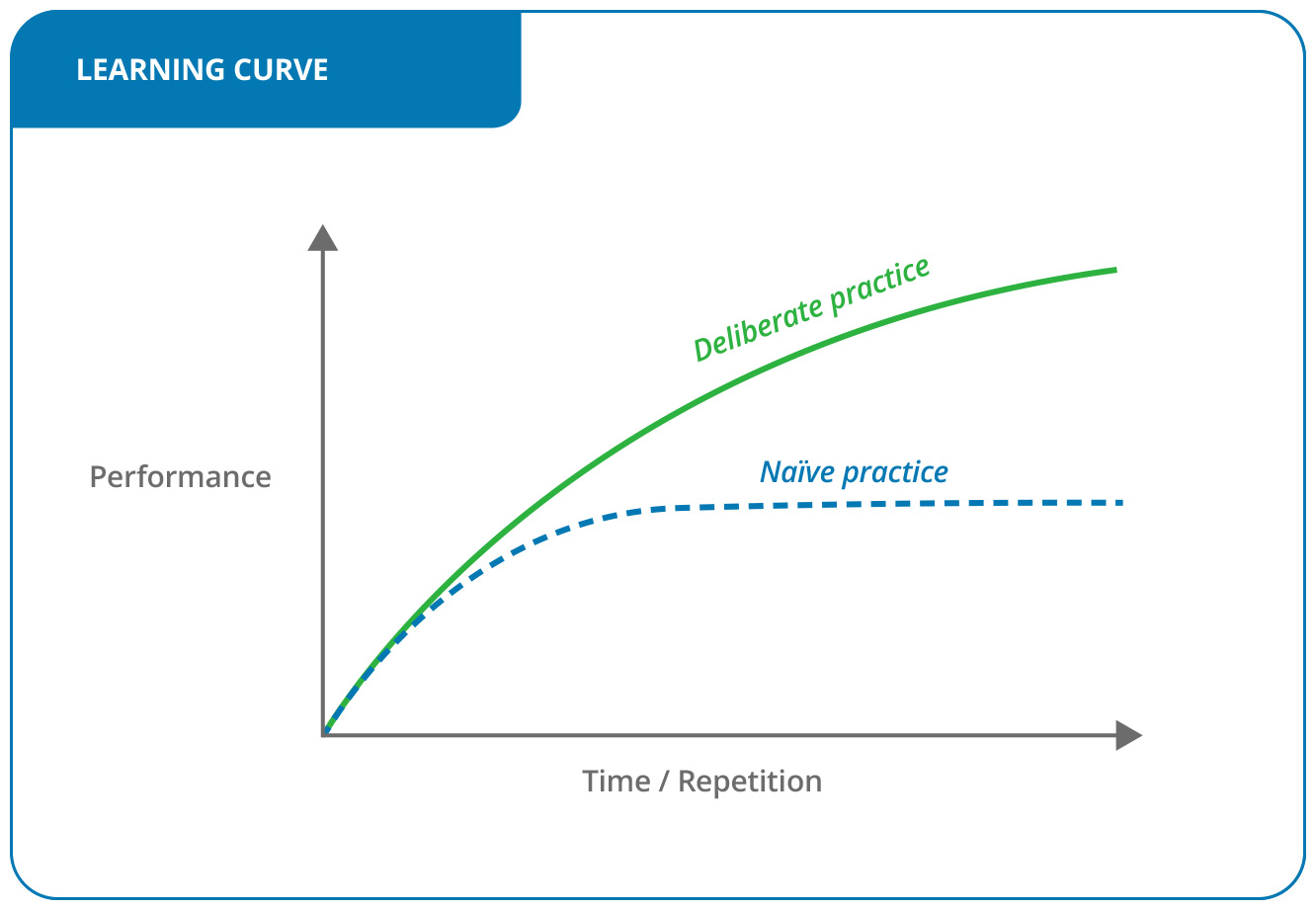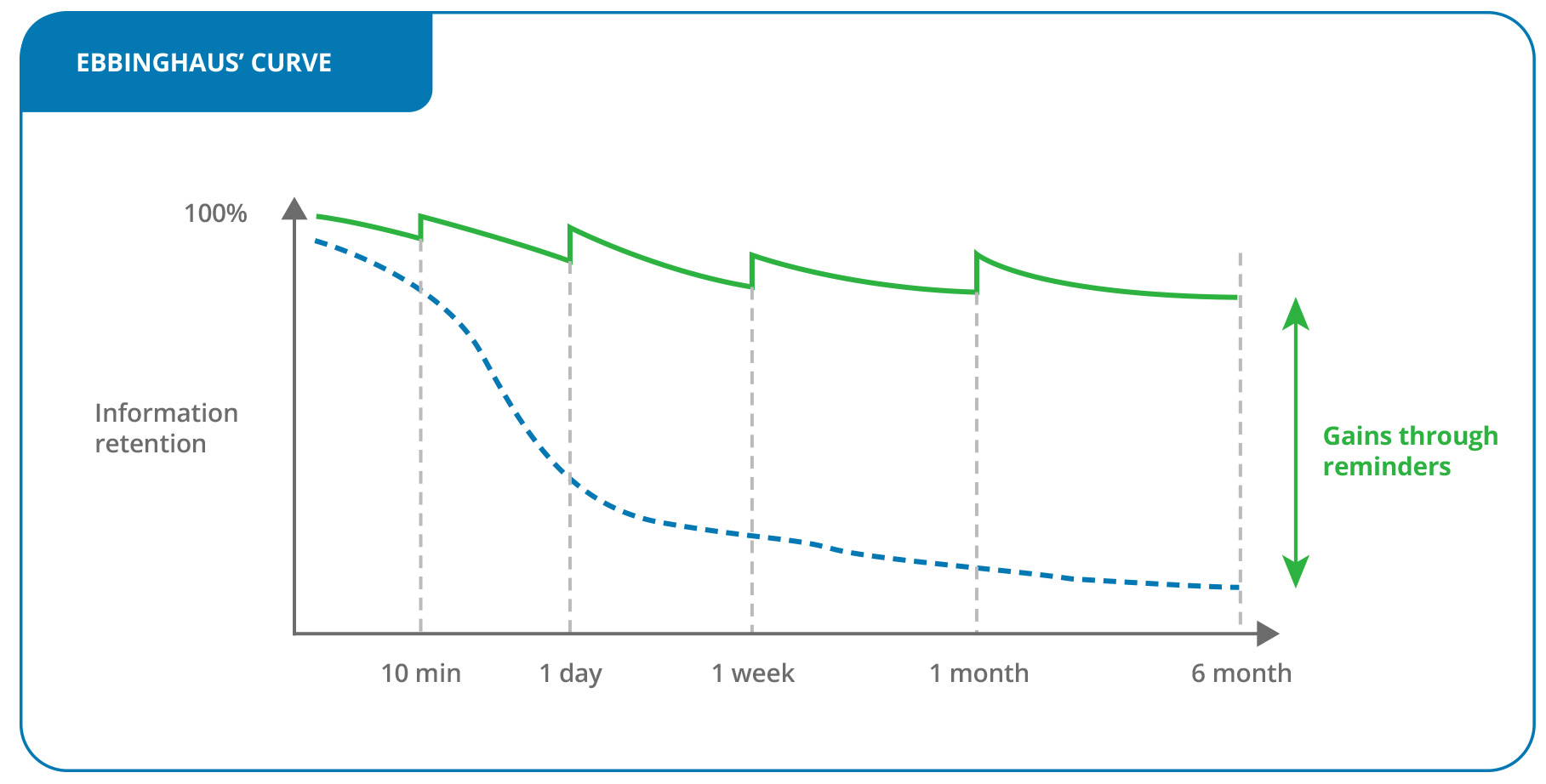Learn by doing, watch out for pitfalls
First there is the phase of development and acquisition of skills, then their concretization in the field. This is why learning by doing is on the rise with trainers and learners. Indeed, this pedagogical method puts practice at the heart of the training course. The learner becomes an actor in his learning, which allows him to develop his skills digitally, as in the field.
The ability of learners to improve is therefore brought into play here and, to achieve their objectives, they stimulate their memory through practical exercises. However, if training allows a marked improvement in performance, beware of disappointment in the long term.
Indeed, Anders Ericsson, a Swedish psychologist and specialist in learning by doing, has defined two ways of practicing: naive and deliberate.
Imagine.
You want to start learning to play a new musical instrument. First, you will learn to hold it, then to play the first notes separately. In a second step, you will start to combine them to play the first songs, the ones you like. You improve significantly by playing them regularly. You amaze yourself and above all, you have fun because, in the end, you play only to entertain yourself. This is called naïve practice.
We all do this naive practice: when we read books for fun, when we go for a morning or evening run to stay in shape, when we surf the web and learn things. By practicing in this way, the investment is less, the personal challenge too. However, this practice can still stimulate you intellectually or physically. You will therefore see clear progress at first, then you will stagnate in the development of skills over the long term. To improve further, one must then move on to deliberate practice.
This second form of practice makes it possible to become an expert in the targeted field by intentionally causing an optimization of learning. To do this, there are fundamental good practices to follow: start defining an action plan and set yourself clear performance objectives. This is what we define as the starting intention. Then you have to challenge yourself by taking into account your pre-existing knowledge so as not to make the completion of the training inaccessible. Then, always seek immediate feedback of your results. Finally, repeat. Because it is through training that you can become an expert in the field.
This last point is the very essence of learning by doing.

Why do some people excel at what they do? Because they are aware of their need for training to fix their skills.
Indeed, the information we are confronted with in our daily lives is only temporarily stored in our memory. Research in psychology and neuroscience has shown that retention is better when the learner is confronted with information continuously in space and time. In order to understand how this works, Ebbinghaus has developed an optimal memorization technique, consisting of repeating information over time at regular intervals.

According to him, to facilitate the retention of information, we must not only understand it, but also adapt the repetition to our forgetting curve. Thus, by repeating this information at regular intervals by gradually spacing out these reminders, we compensate for the loss and retain better over time. In addition, we can do it in different ways: re-listen to the information (recorded lessons, podcast), watch it (Video Learning), reread it (notes, slides, e-learning) or interact (quiz, MCQ, Serious Games).
And that’s where training simulation comes in.
What is a training simulation in its digital form?
We have all already been trained through simulation, whether during studies or during professional training. The simulation of training in learning serves to artificially recreate a professional situation. For this, we use various methods to immerse the learner in a situation: setting up role-playing games in the classroom, using simulation softwares or even, more recently, via virtual reality.
According to Kolb, there are different learning styles: Diverger, Assimilator, Converger, Accommodator; relevant to different types of learners. And it is no surprise that simulation and practice through play are among the learners favorite training activities.
For several years, training simulation has been exported thanks to digital technology to train the professionals of today and tomorrow. Thanks to Digital Learning, training is enriched, and the learner can train according to his needs and practice at will, retention favored by an immersive test and learn approach. This is how a technician memorizes professional gestures before faithfully reproducing them in the field, or how a manager perfects his Soft Skills to lead and grow his teams.
As such, there are a plethora of advantages to this teaching method in the eyes of learning designers and trainers:
- Using digital training simulation allows the learner to train repeatedly, at their own pace or during a Blended Learning program;
- Digital can boost training retention over the long term through the use of various media. This avoids redundancy in the training path and adapts to different types of learners more easily, as defined by Kolb;
- The learner can be confronted with errors and be confronted with his own limits in order to progress more quickly. The digital training simulation allows him to get out of his comfort zone thanks to the various components defined by learning design;
- Digital training simulation also makes it easier to obtain feedback related to completion, allows the company to have more operational employees on various subjects and to stimulate individual and collective intelligence, for a positive ROI.
Lastly, there are various solutions, such as training creation softwares and bespoke projects, if you want to implement a digital training simulation approach in your company.
However, there are levers that should not be ignored if you want your learner to get the most out of their training simulation: storytelling and gamification.
Narration and gamification also have their say
For a trainer, obtaining learners’ unfailing engagement is an ideal. It is this engagement that will condition the intention of the learner throughout the duration of his training, and which will have a strong impact on retention. For this, we must actively capture his attention.
First of all, a good practice to integrate into the training simulation is to include a climactic point in the story and the narration. What do you want to say and how do you want to do it?
Secondly, taking care of the final rendering by these three key aspects is important:
1. Visual. For example, the use of personalized images and your graphic charter allow the learner to be immersed in their role within the company. Similarly, the use of characters, whether in 2D or 3D, offers the opportunity to include a real mentor, accompanying the learner throughout the simulation;
2. Auditory. Would you like to incorporate a voiceover? Ambient sounds? Sound effects? Adding these signals is a good way to make the simulation not only more immersive, but also more fun;
3. Kinesthetic. What freedom of interaction do you want to give the learner?
Digital training simulations are a virtuous training approach in the quest for learner engagement.
Have you tested it?
At Serious Factory, we have developed VTS Editor, the ideal software for creating your first immersive training simulations. Try it for free in its trial version:











